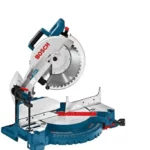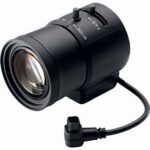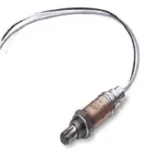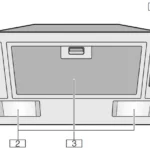Truvo
![]()
![]()
![]()
1 609 92A 6H5 (2021.06)
Safety Instructions
All instructions must be read and observed. The safeguards integrated into the measuring tool may be compromised if the measuring tool is not used in accordance with these instructions. STORE THESE INSTRUCTIONS IN A SAFE PLACE.
- Have the measuring tool serviced only by a qualified specialist using only original replacement parts? This will ensure that the safety of the measuring tool is maintained.
- Do not use the measuring tool in explosive atmospheres which contain flammable liquids, gases or dust. Sparks may be produced inside the measuring tool, which can ignite dust or fumes.
- The measuring tool may not be 100 % accurate for technological reasons. To eliminate hazards, familiarise yourself with further sources of information, such as building plans and photographs taken during construction, etc. before carrying out any drilling, sawing, or routing work on walls, ceilings, or floors. The accuracy of the measuring tool may be affected by environmental influences, such as the level of humidity or there being other electronic devices nearby. The structure and condition of the walls (e.g. damp, building materials containing metal, electrically conductive wallpaper, insulating materials, tiles) and the number, type, size, and position of the objects may distort the measuring results.
- Make sure that you are properly earthed when taking measurements. If you are not properly earthed (e.g. by wearing insulating footwear or by standing on a ladder), it will not be possible to locate live cables.
- If there are gas pipes in the building, check to ensure that none of them have been damaged after completing any work on walls, ceilings or floors.
- Live wires can be detected more easily when power consumers (e.g. lamps, appliances) are connected to the wire being sought and switched on. Switch off power consumers and make sure that live cables are de-energized before drilling, sawing or milling into walls, ceilings or floors. After performing any kind of work, check to ensure that objects placed on the base material are not live.
- When attaching objects to dry walls, and in particular when attaching them to the substructure, check to ensure that both the wall and the fastening materials have a sufficient load-bearing capacity.
Product Description and Specifications
Please observe the illustrations at the beginning of this operating manual.
Intended Use
The measuring tool is intended for the detection of metal (ferrous and nonferrous metals, e.g. reinforcing steel) and live wires in walls, ceilings and floors.
The measuring tool is suitable for indoor use.
Product features
The numbering of the product features shown refers to the illustration of the measuring tool on the graphic page.
- Gripping surface
- On/off switch
- Indicator light
- Left-hand and right-hand marking aids
- Top marking aid
- Sensor area
- Serial number
- Battery compartment cover
- Battery compartment cover locking mechanism
Technical data
| Digital detector | Truvo 3 603 F68 2.. |
| Article number | |
| Max. detection depth | |
| – Ferrous metals | 70 mm |
| – Non-ferrous metals (copper pipe) | 60 mm |
| – Single-phase live cables (110-240 V, 50-60 Hz, with voltage applied)8) | 50 mm |
| Calibration | Automatic |
| Operating temperature | 0°C to +40°C |
| Storage temperature | -20°C to +70°C |
| Operating frequency range | 50 ± 2 kHz |
| Max. magnetic field strength (at 10 m) | 42 dBpA/m |
| Max. altitude | 2000 m |
| Relative air humidity | 30-80 % |
| Pollution degree according to IEC 61010-1 | 2C) |
| Batteries | 3 x 1.5 V LR3 (AAA) |
| Approx. operating time | 5 h |
| Weight according to EPTA-Procedure 01:2014 | 0.15 kg |
Weight according to EPTA-Procedure 01:2014 0.15 kg
A) Depends on the material and size of the objects, as well as the material and condition of the substrate
B) Lower detection depth with non-live wires
C) Only non-conductive deposits occur, whereby occasional temporary conductivity caused by condensation is expected.
The serial number (7) on the type plate is used to clearly identify your measuring tool.
- The accuracy and detection depth of the measuring result may be negatively affected if the condition of the substrate is unfavorable.
Assembly
Inserting/changing the batteries
It is recommended that you use alkaline manganese batteries to operate the measuring tool.
To open the battery compartment cover (8), press the locking mechanism (9) and lift open the battery compartment cover. Insert the batteries.
When inserting the batteries, ensure that the polarity is correct according to the illustration on the inside of the battery compartment.
Always replace all the batteries at the same time. Only use batteries from the same manufacturer and which have the same capacity.
- Take the batteries out of the measuring tool when you are not using it for a prolonged period of time. The batteries can corrode and self-discharge during prolonged storage in the measuring tool.
Operation
- Protect the measuring tool from moisture and direct sunlight.
- Do not expose the measuring tool to any extreme temperatures or variations in temperature. In case of large variations in temperature, leave the measuring tool to adjust to the ambient temperature before switching it on. The precision of the measuring tool may be compromised if exposed to extreme temperatures or fluctuations in temperature.
- Avoid hard knocks to the measuring tool or dropping it. After severe external influences and in the event of abnormalities in the functionality, you should have the measuring tool checked by an authorized Bosch after-sales service agent.
- Certain ambient conditions fundamentally impair the measuring results. These include, e.g. the proximity of devices that generate strong electric, magnetic or electromagnetic fields, moisture, metal building materials, foil-laminated insulation materials, or conductive wallpaper or tiles. Therefore, also refer to other information sources (e.g. construction plans) before drilling, sawing, or routing into walls, ceilings, or floors.
- Hold the measuring tool by the intended gripping surface (1) only, so as not to influence the measurement.
- Do not attach any stickers or labels to the sensor area (6) on the rear of the measuring tool. Metal labels in particular will affect measuring results.
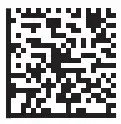 Do not wear gloves when taking measurements and make sure that you are properly earthed. If you are not properly earthed, the identification of live wires may be impaired.
Do not wear gloves when taking measurements and make sure that you are properly earthed. If you are not properly earthed, the identification of live wires may be impaired.
 When taking measurements, avoid devices that emit strong electric, magnetic or electromagnetic fields. If possible, deactivate all tools whose radiation could interfere with the measurement and switch off the corresponding functions or tools.
When taking measurements, avoid devices that emit strong electric, magnetic or electromagnetic fields. If possible, deactivate all tools whose radiation could interfere with the measurement and switch off the corresponding functions or tools.- Starting Operation
Switching on/off
- Before switching on the measuring tool, ensure that the sensor area (6) is dry. If necessary, use a cloth to dry the measuring tool.
- If the measuring tool has been exposed to a significant change in temperature, leave it to adjust to the ambient temperature before switching it on.
![]() To switch on the measuring tool, push the on/off switch (2) down.
To switch on the measuring tool, push the on/off switch (2) down.
The measuring tool carries out a short self-check and calibrates itself automatically. Once the indicator light (3) turns green, the measuring tool is ready to use.
![]() To switch off the measuring tool, push the on/off switch (2) up.
To switch off the measuring tool, push the on/off switch (2) up.
If no measurement takes place for approx. 10 minutes, the measuring tool automatically switches off to save the batteries.
Note: When the measuring tool has switched off automatically, the on/off switch (2) will still be in the “on” position. To switch the measuring tool on again, first, switch it off and then switch it on again.
How it Works
The measuring tool checks the substrate of the sensor area (6) up to the maximum detection depth.
Metal objects and live cables are automatically searched for during each measurement.
![]()
Always move the measuring tool in a straight line in a lateral direction over the substrate, applying light pressure, without lifting it off or changing the pressure. Hold the measuring tool by the gripping surface (1) with an even grip and do not touch the sensor area (6) while taking measurements.
| Indicator light and audio signal | Meaning |
| Green + silent | No object is within the sensor range |
| Yellow + silent | – Metal object near the sensor or – Small or deep-lying metal object is within the sensor range or – Sensor interference due to the unfavorable nature of the wall |
| Red + continuous tone | The metal object is within the sensor range |
| Red flashing + pulsating sound | Live cable is within the sensor range |
Objects are only displayed roughly the first time you move over them. Move the measuring tool several times over the same surface in order to locate the object precisely.
The detection depth of the measurement depends on the material and size of the objects, as well as the material and condition of the substrate, and may be less than the maximum detection depth.
- Before drilling, sawing or routing into walls, refer to other sources of information to ensure that you eliminate hazards. Since the measuring results can be influenced by ambient conditions or the nature of the wall, there may be a hazard even though no audio signal is emitted and the indicator light (3) lights up green.
Searching for Metal Objects
When approaching a metal object, the indicator light (3) first lights up yellow, then changes to red and an audio signal is emitted. The pitch of the audio signal increases as the metal object is approached. If the metal object is below the center of the sensor range (6), the pitch will be at its highest.
- Even when the indicator light is yellow, there may be a metal object below the sensor range. Small or deep-lying metal objects are near the sensor, or the nature of the wall affects the measuring result.
Searching for Live Cables
The measuring tool displays single-phase live cables (110−240 V, 50−60 Hz). Other cables (multi-phase electricity cables, DC, higher/lower frequency or voltage), as well as non-live cables, cannot be reliably detected, but they may be displayed as metal objects. Preparing to take measurements and features of the measuring process:
– The cable must be live. You should therefore connect electricity consumers (e.g. lights, appliances) to the electricity cable you are trying to find. Switch on the electricity consumers to ensure that the electricity cable is live.
– The 50–60 Hz signal from the electric cable must be able to reach the measuring tool. If the cable is in damp walls (e.g. due to high humidity), behind metallic foils (e.g. from thermal insulation) or in an empty metal pipe, the signal will not reach the measuring tool and you will not be able to find the cable.
If the indicator light (3) lights up yellow or red over a larger range, then the material is electrically shielded and the search for living ables is not reliable.
–The measuring tool must be sufficiently earthed. To do this, hold it firmly (without gloves) by the gripping surface (1). Make sure that you are in good contact with the floor. Insulating shoes, ladders or platforms may compromise your contact with the floor. The floor must also be earthed in order for live cables to be detected.
– The 50–60 Hz signal from the electric cable must be stronger along the cable than in its immediate vicinity. If the wall is very dry or poorly earthed, the signal will be the same strength throughout the wall.
This will result in the measuring tool indicating that it has found a signal over a large area, but it will not be able to detect the exact location of the cable. In this instance, it may be helpful to place your free hand on the wall 20−30 cm from the measuring tool in order to conduct the signal away from the wall.
If a live cable is found, the indicator light (3) flashes red and a pulsating audio signal will sound at a fast rate.
Working Advice
Marking objects
If required, detected objects can be marked. Perform a measurement as usual.
Once you have found the boundaries or the center of an object, mark the sought location at the top marking aid (5) and the side marking aid (4). Connect the points with a vertical and horizontal line. The boundary or the center of the object is located where the lines intersect.
Recalibration
Manually recalibrate the measuring tool if the indicator light (3) continues to light up yellow or red even though there is no metal near the measuring tool.
– Switch on the measuring tool using the on/off switch (2).
– Remove a battery from the measuring tool whilst it is switched on.
– Switch off the measuring tool using the on/off switch (2) after the battery has been removed.
– Reinsert the battery into the measuring tool. Ensure that the polarity is correct.
– Remove all objects near the measuring tool (including watches or metal rings) and hold the measuring tool in the air.
– Switch the measuring tool on and off again within 3 s using the on/off switch (2). The indicator light (3) will flash red slowly for the 3 s to indicate readiness for calibration.
– Switch the measuring tool back on within 0.5 s. The calibration will start and take roughly 6 s. During calibration, the indicator light (3) flashes green at a fast rate. Once the indicator light lights up green continuously, the calibration is complete and the measuring tool is ready to use.
Note: If the sequence of switching off and switching on again is not observed, calibration will not take place. The indicator light (3) continues to light up yellow or red even though there is no metal nearby. In this case, repeat the calibration in the exact same way.
Errors – Causes and Corrective Measures
| Cause | Corrective measures |
| Measuring results inaccurate/implausible | |
| Interfering objects are within the sensor range (6) | Remove all interfering objects (e.g. watches, bracelets, rings, etc.) from within range of the sensor (6). Do not hold the measuring tool close to the sensor. |
| Auto-calibration not successful | Manually recalibrate the measuring tool. |
| The indicator light does not light up. | |
| The measuring tool has switched off automatically. | Switch the measuring tool off and on again. |
| Batteries drained | Change the batteries. |
| Indicator light lights up green/yellow/red in an uncoordinated manner. | |
| Interference from electric, magnetic or electromagnetic
fields |
If possible, deactivate all tools whose radiation could interfere with the measurement and switch off the corresponding functions or tools. |
| Indicator light flashes continuously, alternating green/yellow/red. | |
| Measuring tool faulty | Send the measuring tool to an authorized Bosch after-sales service center. |
Error when searching for and indicating metal
| Cause | Corrective measures |
| Indicator light lights up yellow or red even though there is no metal nearby. | |
| Ambient temperature too high/too low | Only use the measuring tool in the operating temperature range. |
| Cause | Corrective measures |
| Strong temperature variation | Allow the measuring tool to reach the correct temperature. |
| Auto-calibration not successful | Manually recalibrate the measuring tool. |
| Indicator light lights up the wall. yellow or red over a large measuring range on | |
| Many metal objects spaced closely together | Be sure to listen to the pitch of the audio signal in order to distinguish between individual metal objects. Metal objects spaced too closely together cannot be detected separately. |
| Building materials containing metal or reinforcing steel in concrete | In the presence of metallic building materials (e.g. foil-laminated insulation materials, heat conduction plates), reliable detection is not possible. |
| Solid metal objects on the back of the wall | In the presence of solid metal objects (e.g. radiators), reliable detection is not possible. |
| Auto-calibration not successful | Manually recalibrate the measuring tool. |
| Metal object not found. | |
| Metal object is too deep or too small. | The detection depth depends on the building material and on the object and maybe less than the maximum detection depth. |
Error when searching for and indicating live cables
| Cause | Corrective measures |
| The indicator light flashes red over a large measuring range on the wall. | |
| Insufficient earthing of the wall | Touch the wall with your free hand at a distance of 20−30 cm from the measuring tool in order to earth the wall. |
| Live cable not found. | |
| No/unusual voltage in the cable | Apply voltage to the cable, e.g. by turning on the corresponding light switches. It is not possible to reliably detect multi-phase electricity cables |
Maintenance and Service
Maintenance and Cleaning
- Check the measuring tool before each use. If the measuring tool is visibly damaged or parts have become loose inside the measuring tool, the safety function can no longer be ensured. Always keep the measuring tool clean and dry to ensure optimum, safe operation. Never immerse the measuring tool in water or other liquids. Wipe off any dirt using a dry, soft cloth. Do not use any detergents or solvents.
After-Sales Service and Application Service
Our after-sales service responds to your questions concerning maintenance and repair of your product as well as spare parts. You can find explosion drawings and information on spare parts at: www.bosch-pt.com
The Bosch product use advice team will be happy to help you with any questions about our products and their accessories.
In all correspondence and spare parts orders, please always include the 10‑digit article number given on the nameplate of the product.
Great Britain
Robert Bosch Ltd. (B.S.C.)
P.O. Box 98
Broadwater Park
North Orbital Road
Denham Uxbridge
UB 9 5HJ
At www.bosch-pt.co.uk you can order spare parts or arrange the collection of a product in need of servicing or repair.
Tel. Service: (0344) 7360109
E-Mail: [email protected]
You can find further service addresses at: www.bosch-pt.com/serviceaddresses
Disposal
Measuring tools, accessories and packaging should be recycled in an environmentally friendly manner.
 Do not dispose of measuring tools or batteries with household waste.
Do not dispose of measuring tools or batteries with household waste.
Only for EU countries:
According to the Directive 2012/19/EU, measuring tools that are no longer usable, and according to the Directive 2006/66/EC, defective or used battery packs/batteries, must be collected separately and disposed of in an environmentally correct manner.
Robert Bosch Power Tools GmbH
70538 Stuttgart
GERMANY
www.bosch-pt.com
![]()
